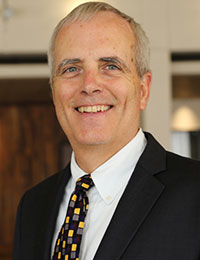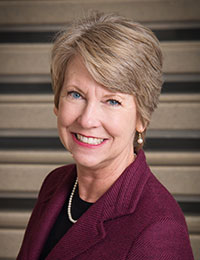Engineering Entrepreneurs in College Station
Texas A&M University (TAMU) professors Rodney Boehm and Shelly Tornquist are kindred spirits with a shared passion: to spark young, entrepreneurial minds.

Rodney Boehm
Director of Engineering Entrepreneurship
Texas A&M University
Boehm is TAMU’s director of engineering entrepreneurship and an Aggie alum with degrees in electrical engineering. He brings both classroom and real-world perspectives to helping students understand what it takes to succeed, whether with an established company, a startup or as a lone entrepreneur. Boehm has more than 30 years of experience in the telecommunications industry, working in disciplines such as design engineering, business development and marketing, and has served as a company’s chief operating officer.
Similarly, Tornquist, TAMU’s director for Spark!, a pre-K through grade 12 engineering education outreach program, brings a wealth of experience to College Station. As a Houston schoolteacher, she reached more than 3,000 students as part of the national pre-engineering curriculum Project Lead the Way (PLTW). She was instrumental in bringing this innovative program to Texas and served as its state lead, teaching other teachers how to use the curriculum to inspire their students.

Shelly Tornquist
Director of Spark!
Texas A&M University
Tornquist came to TAMU two years ago to create Spark!, which is designed to help the university achieve its “25 by 25” target: raising Aggie engineering enrollment to 25,000 by the year 2025.
“We try to spark an interest in engineering and reach kids as young as pre-K,” Tornquist says. “Third graders are a particular sweet spot. They are at the perfect age to start learning how math and science can be tools for solving all sorts of problems. And that is precisely what engineering is!”
To spark future A&M engineers, Boehm and Tornquist rely on a variety of curricular and extracurricular activities. One of the most effective tools in their arsenal is the popular Aggies Invent contest, which gives multi-disciplinary teams of students 48 hours to solve a problem derived from need statements created by industry or agency participants. Students are challenged to work together to design, build and sell a solution. The trick, Boehm says, is to get them thinking like the customers they’re attempting to serve, with innovative approaches to meeting a market, social or public policy need.
“What we try to do is instill a customer service mentality,” says Boehm. “They need to understand their roles in creating value for individual customers, an employer, the marketplace or society as a whole. Tomorrow’s engineers will be continually required to prove they are creating value by thinking like an entrepreneur, whether they’re on someone else’s payroll or trying to sell their products and services in the always-competitive marketplace of ideas.”
To date, TAMU has held more than 25 Aggies Invent events. Participants pitch their inventions to business leaders and engineering faculty. Winning teams receive cash prizes of $1,000 as well as a bright spot on their resumes.
Boehm and Tornquist are particularly excited about a pilot they held in early 2017 to test whether the program could be extended to high-school and middle-school students. The pilot, for high school students, was conducted at the TAMU Engineering campus in Doha, Qatar. It exceeded all expectations and proved a big hit with younger students. Tornquist wasn’t all that surprised, noting that “One of the most popular shows these days for high school kids is Shark Tank.”
On the heels of this success, Tornquist invited four Texas high school teachers to participate with TAMU students at an April 2018 Aggies Invent in College Station. Together, Tornquist and the teacher participants considered the skill sets needed to roll out an Aggies Invent Junior Division in Texas. The objective is to interest K-12 students in STEM fields (science, technology, engineering, mathematics), engineering programs and entrepreneurialism.
“We want to help the younger children begin to see what engineering is and get them discovering what types of jobs engineers do,” Tornquist says. “As they get older, we’ll expose them to the types of problems engineers are challenged to address on the job in the real world.”
Recently, TAMU received a gift from the business community that will help middle school and high school students discover the possibilities of engineering. The school’s new Mobile Makerspace is a high-tech trailer chock-full of gadgets such as a 3-D printer, a thermal imaging camera and a host of robots. Kids can engage in hands-on experiments, build science projects and participate in other fun activities. In the near future, Tornquist and her team plan to take Makerspace on the road across Texas.
“Spark and discovery are the first two steps in creating entrepreneurial engineers at Texas A&M,” Boehm says. “After we get them interested, they have to be ready to tackle challenging college-level STEM coursework.”
And those courses definitely present a challenge. The U.S. Department of Education found that nearly half of all entering college freshmen who were declared STEM majors did not go on to receive STEM degrees, either changing majors or dropping out of school altogether.
“We lose some engineering majors because they really had no idea what they were signing on for and were not prepared,” Tornquist says. “All those high school high fliers get to TAMU and suddenly find they’re in a whole roomful of high fliers. We lose some to what I call the ‘line in the sand’ math. They may have overestimated their math abilities and underestimated the grit it takes to get through our classes.” That’s why preparation and training at an early age is crucial to STEM students.
Boehm notes that engineers with entrepreneurial aspirations needn’t be “MBAs in training,” but a firm grounding in business basics will help catapult them to successful careers.
“They should understand concepts like business law, contracts and intellectual property from an engineering point of view,” he says. “And how to make sense of a balance sheet. All of that makes them more valuable to an employer or helps them realize their dreams…“
Boehm encourages entrepreneurial-minded TAMU engineering students to take advantage of school resources as well as networking opportunities with successful business leaders who lend their time to Aggies Invent or speaking events at the school. StartupAggieland, a business incubator offering young entrepreneurs rent-free, furnished office space, is just a phone call or mouse click away.
“Texans, by our nature, are very entrepreneurial,” Boehm says. “From the early days of the oil industry to today’s biotech startups, we have a ton of entrepreneurial spirit, a rich legacy and wonderful examples to follow. So it’s natural to continue to foster, feed and allow that entrepreneurial spirit to burn brightly in our students. That’s what we’re trying to do here.” FN
Learn more about Texas A&M’s engineering entrepreneurship program.

